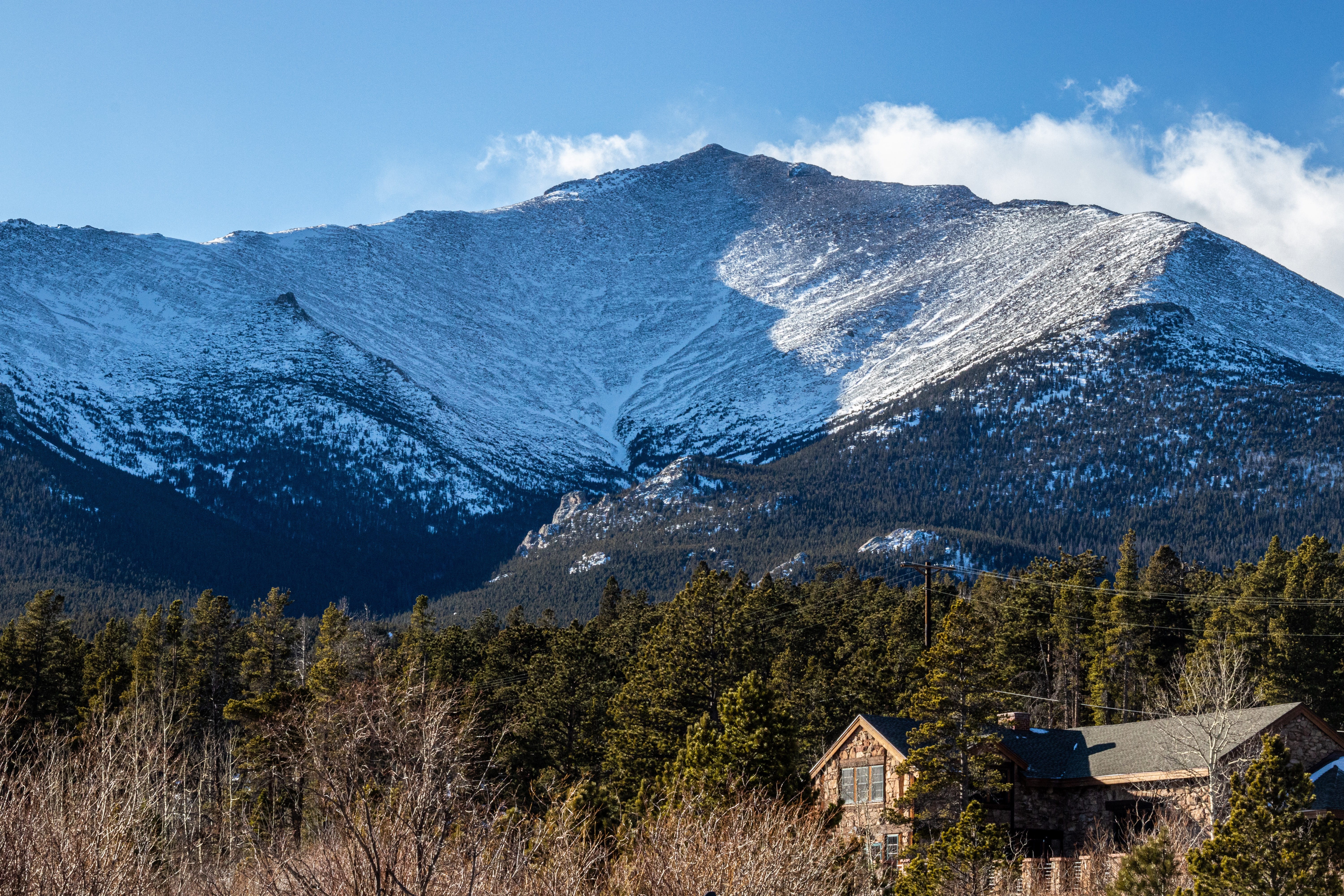Study: Western Boulder County homes have biggest carbon footprint in U.S.

Saturday, July 25, 2020
Despite its green reputation — and consistent efforts to combat climate change-causing emissionsIn this context, the GHG that are released into the atmosphere from the burning of fossil fuels to g... — Boulder County received some unsettling news this week. People living in the western portion of the county create more pollution from their homes than anywhere else in the United States.
That’s according to a study from the University of Michigan that looked at carbon emissions of 93 million American homes. The study’s lead author cautioned against zeroing in on specific zip codes but said the larger lessons revealed by the data are applicable in Boulder and beyond: Namely, that big, mostly empty houses typical of wealthy communities are bad for the environment.
The notion of how, what and where we build (and utilize) housing has increasingly crept into conversations about climate change. It remains a tough sell among Boulder’s density-averse leaders, who have largely maintained that such policies are a matter of politics, not sustainability.
The rich pollute, the poor suffer
Published Monday in the journal Proceedings of the National Academy of Sciences, the study estimated carbon emissions from energy used in 78% of all U.S. residences, cross-referencing data on floor space, age of construction, income, heat supply, source of electricity and more. Authors found that wealthier households produce 25% more pollution than those of more modest means, though the poor bear the brunt of climate change through chronic illness and disease related to pollution.
“ZIP-code level analysis shows income is positively correlated with both per capita energy use and emissions, along with the tendency for wealth and living area to increase together,” the study notes. “City and neighborhood analyses underscore the environmental benefits of denser settlement patterns and the degree to which carbon-intensive electrical grids counteract these benefits.”
Read: The carbon footprint of household energy use in the United States
The Associated Press, which reported on the findings, included a list of the best and worst polluters. The 25 lowest-pollution zip codes were all in California and New York; the highest were scattered over more than a dozen states.
Worst of all was zip code 80510, roughly the area from Allenspark to Grand Lake and Long’s Peak. Homes there produce 23,811 pounds of CO2 per person, AP reported — 18 times more than San Francisco abodes.
Read: “Rich Americans spew more carbon pollution at home than poor” Associated Press
Lead author Benjamin Goldstein wasn’t too keen on singling out any particular zip code, so as not to “shame” residents there.
“These people who live in these zip codes are unwilling participants in my experiment,” Goldstein said in a Friday interview. “They never asked for this type of thing.”
There also may be areas missing from the list, or ones categorized incorrectly. But in looking at Boulder-area zip codes, he said the “general story” follows the larger themes of the study: a “predominance of single family homes” — most built between 30 and 60 years ago — “with relatively high average (square footage) per occupant” in a cold environment, requiring heavy use of heating, typically provided by natural gas or propane.
All those factors contribute carbon dioxide to the atmosphere. The model did not capture embodied energy, something Boulder is trying to work into its building codes.
What is embodied energy? Energy consumed by all of the processes associated with the production of a building, from the mining and processing of natural resources to manufacturing, transport and product delivery
Measuring embodied energy can be tricky. With older construction, it “maybe accounts for 10% of energy use,” Goldstein said. “But as buildings become more and more efficient, than that chunk of embodied energy becomes more and more important.”
Clean energy essential
Another factor in Boulder’s poor showing: Our carbon-heavy grid. Colorado gets more of its electricity from fossil fuels than the nation as a whole; about 30% more, according to Goldstein. The state rounded out the worst 10 offenders.
De-carbonization is a central goal of Boulder’s bid to create its own electric utility. The city has a target of 100% renewable energy by 2030. Its current provider, XcelXcel Energy, a publicly traded utility company based in Minnesota. Energy, has pledged 80% carbon-free electricity by the same year.
“Meaningful reductions to residential emissions” — which account for 20% of all U.S. greenhouse gas emission — “will require concurrent grid decarbonization, energy retrofits, and reduced in-home fuel use,” study authors concluded. “Scenarios also suggest that making new construction low-carbon will require smaller homes, which can be promoted through denser settlement patterns.”
Both the city and county of Boulder attempt to alleviate energy demands of large homes by requiring them to offset use by on-site renewables, or else paying into an impact fund. By 2031 (in Boulder) and 2022 (in Boulder County), all new residential construction will have to do so, regardless of size.
Nonetheless, as the study notes, “low-carbon homes do not necessarily make for low-carbon communities” if there isn’t enough population density to support alternative modes of transportation, the largest source of emissions in the U.S.
Transportation comes second in Boulder, though the city notably doesn’t count contributions from the 64,900 (pre-pandemic) daily in-commuters. It’s likely that Boulderites’ above-average use of cycling, walking and public transit shrinks individual carbon footprints — the study didn’t look at total pollution, just that from home energy use — but even so, Goldstein said, climate change has to be tackled from every angle.
He and other authors wrote in the study that reductions laid out by the Paris Agreement can’t be achieved “by decarbonizing electricity production alone.” It will “require building fewer single-family homes. … New homes will need to be smaller.”
In fast-growing states such as Colorado, “floor area per capita” needs to decrease by 26%, the study found. “Nationally, density needs to increase on average by 19%.”
“We need a more comprehensive and wider-ranging plan of attack,” Goldstein said. “If we really want to not blow the fuse of the planet. We can’t ignore other aspects of our lifestyles.”
Taboo topic
That holistic, all-encompassing approach to climate change is being considered more and more, with transportation experts considering housing/land use and vice versa. In Boulder, though, the topic is approached with caution, if at all.
The Transportation Advisory Board is actually prohibited from discussing land use. A July 2019 discussion of the city’s Climate Action Plan did not touch on land use, though later presentations to council did.
Nationally, the Sierra Club has endorsed compact development, a stance not yet adopted by the local Indian Peaks chapter. So, too, did many in Boulder reject a local report on density’s environmental benefits, noting the politically motivated timing.
Housing policy does nod toward the values of urban living, encouraging density along transit corridors and walkable neighborhoods. Just as often, land use is left out of decisions that would nonetheless incentivize greener lifestyles.
Council earlier this year talked about taxing the estimated hundreds of empty homes (according to 2018 Census data), though for reasons related to affordability, not climate. Sustainability was barely a concern in a scrapped project to cap home sizes, with elected officials feeling that energy codes were a sufficient deterrent.
The latter issue may be revisited as part of a promised look at occupancy limits. One of critics’ arguments against relaxing them is that tying residents to the number of bedrooms, rather than a hard cap of three or four unrelated persons, could result in the destruction of existing dwellings for multi-bedroom houses — ironically, an argument made by some of the same people who rejected restrictions on sparsely inhabited “McMansions” that have increasingly replaced family homes.
Of course, there are issues borne of increasing population within constrained space: noise and crowding, water quality (and quantity), loss of tree canopy and permeable surfaces (though Boulder has regulations in place to abate those last two). It’s not about finding a perfect solution or silver bullet, Goldstein said. It’s about acknowledging that many closely held ways of life have outsize impacts on the environment.
“That’s what this study was hoping to do, to at least get people to ask these type of tough questions and rethink the way we’re living,” he said. “It doesn’t mean everyone has to live in Manhattan; we found that homes in L.A. can be very low-carbon even though they are single-family homes. They’re smaller, on modest-size plots.”
It also doesn’t mean that every overlarge home should be immediately scraped and replaced with energy-efficient apartments. “Those homes are built now and there’s nothing we can do about that,” Goldstein said, something scientists refer to as carbon lock-in.
“No one is going to cut off half of their house,” but cities could encourage them to be used and powered differently and put a better plan in place for when structures reach the end of their life; about 40 years, on average, for homes in the U.S.
“We can strike a balance,” Goldstein said. “In the long run, this study suggests that, for neighborhoods that have higher population density and smaller homes, it’s easier for them to meet long-term climate goals.”
— Shay Castle, boulderbeatnews@gmail.com, @shayshinecastle
Want more stories like this, delivered straight to your inbox? Click here
to sign up for a weekly newsletter from Boulder Beat.
Climate Housing Municipalization Associated Press Boulder Boulder City council Boulder County carbon carbon footprint city council Climate Action Plan climate change climate goals density emissions energy energy efficiency GHG land use municipalization National Academy of Sciences Transportation Advisory Board University of Michigan Xcel Energy


1 Comment Leave a comment ›